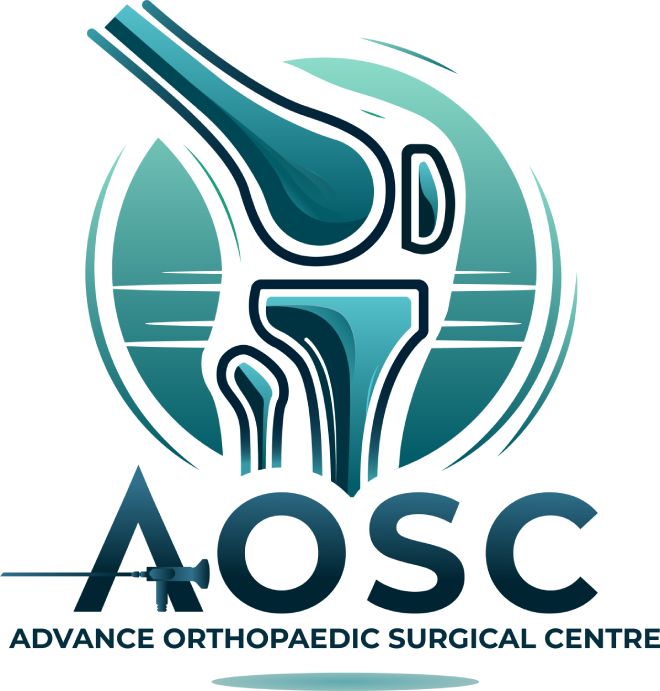Reverse Shoulder Arthroplasty & Total Shoulder Replacement
Introduction
Shoulder arthroplasty is a surgical procedure that replaces a damaged or dysfunctional shoulder joint with artificial parts known as prosthetics. The two major types of shoulder replacement surgeries are Total Shoulder Replacement (TSR) and Reverse Shoulder Arthroplasty (RSA). Both are aimed at restoring shoulder functionality and relieving pain, but they differ in their technique and the types of conditions they address.
Anatomy of the Shoulder
The shoulder joint is a ball-and-socket joint consisting of three bones: the humerus (upper arm bone), scapula (shoulder blade), and clavicle (collar bone). The rounded head of the humerus fits into the glenoid cavity of the scapula, where the surfaces of both bones are covered with articular cartilage that reduces friction. This setup gives the shoulder the greatest range of motion of any joint in the human body.
Total Shoulder Replacement (TSR)
In TSR, either the rounded head of the humerus or the glenoid cavity (or both) is replaced with a prosthetic component. The prosthesis typically consists of metal for the humeral head and polyethylene for the glenoid component. This procedure is often recommended for patients suffering from conditions like osteoarthritis, fractures, rotator cuff tear arthropathy, and rheumatoid arthritis, especially when non-surgical treatments like medications and physical therapy have failed.
Reverse Shoulder Arthroplasty (RSA)
Reverse Shoulder Arthroplasty is a unique variation of shoulder replacement surgery, particularly effective for patients with rotator cuff tear arthropathy or those who have a non-functional rotator cuff. The procedure “reverses” the normal anatomy of the shoulder joint by swapping the positions of the ball and socket. In this case, the glenoid becomes the ball, and the humeral head becomes the socket. This change in mechanics shifts the center of rotation of the joint, allowing the deltoid muscle to take on the primary role in shoulder motion. RSA is commonly used for patients with massive rotator cuff tears, rheumatoid arthritis, or failed prior shoulder replacements.
Indications for Reverse Shoulder Arthroplasty
Reverse Shoulder Arthroplasty is indicated in the following conditions:
- Rotator cuff tear arthropathy
- Massive rotator cuff tears with pseudo-paralysis
- Glenohumeral arthritis
- Failed shoulder arthroplasty
- Rheumatoid arthritis with adequate glenoid bone stock
- Proximal humerus fractures in elderly patients (over 70 years)
- Re-implantation after tumor excision
- Periprosthetic fractures and mal-union/non-union of the tuberosity fractures of the proximal humerus
Pre-Requisites for RSA
For a successful Reverse Shoulder Arthroplasty, the patient should have:
- Sufficient glenoid bone stock
- A functional deltoid muscle
- An intact axillary nerve
Biomechanics of Reverse Shoulder Arthroplasty
The major biomechanical advantage of RSA is the repositioning of the center of rotation, which allows the deltoid muscle to work with more mechanical advantage. This shift enables the deltoid to compensate for the loss of the rotator cuff muscles, improving shoulder abduction and mobility. However, RSA does not significantly improve internal or external rotation, but it can be combined with a latissimus dorsi transfer to assist with these motions.
Surgical Technique for Reverse Shoulder Arthroplasty
Two common approaches are used:
- Superolateral Approach – This technique has a lower incidence of postoperative instability and a reduced risk of scapular spine and acromion fractures.
- Deltopectoral Approach – This method helps preserve active external rotation and provides better orientation for the glenoid component, reducing the risk of glenoid loosening and scapular notching.
Surgical Procedure
- Humeral Preparation: The humeral head is typically osteotomized between 0 to 30 degrees of retroversion, with some surgeons preferring more retroversion to improve post-operative external rotation. The long head of the biceps is tenotomized, and the humerus is reamed and broached.
- Glenoid Preparation: The labrum is excised, and the capsule is circumferentially released. The baseplate is placed inferiorly with an inferior tilt, followed by mounting the glenosphere onto the baseplate.
- Tuberosity Repair: Anatomically repairing the greater tuberosity has been shown to improve external rotation, function, and patient satisfaction.
Post-Operative Care for Both Procedures
Regardless of the type of shoulder surgery, post-operative care is critical to recovery:
- Pain Management: Patients are often prescribed anti-inflammatory drugs, steroid injections, opioids, or local anesthetics for pain relief.
- Wound Care: The surgical site is carefully monitored, and sutures or staples are removed after a few weeks. Avoiding water contact is essential to prevent infections.
- Physical Therapy: Rehabilitation is vital in both types of shoulder replacement surgeries. Physical therapy begins with gentle exercises to increase range of motion and flexibility, progressing to strengthening exercises as recovery continues.
Complications to Watch For
Both Total Shoulder Replacement and Reverse Shoulder Arthroplasty carry risks of complications such as:
- Infection
- Humeral or glenoid fractures during surgery
- Instability and dislocations
- Loosening or failure of the prosthesis
- Scapular notching (in RSA)
Why Surgery May Be Recommended
Shoulder replacement surgery may be recommended if:
- The patient experiences chronic pain, even at rest.
- The shoulder is stiff, and normal daily activities are difficult or impossible to perform.
- Conservative treatments like medications, injections, and physiotherapy have not provided relief.
Pre-Surgical Considerations
Before surgery, a thorough assessment is performed, including:
- Medical History: The surgeon gathers information on past injuries, chronic conditions, and any prior surgeries.
- Physical Examination: The shoulder’s range of motion, stiffness, pain, and swelling are evaluated.
- X-Rays and Other Imaging: X-rays provide crucial information about the joint’s condition, and additional tests like MRIs or CT scans may be performed to assess soft tissue and bone damage.
Conclusion
Both Reverse Shoulder Arthroplasty and Total Shoulder Replacement are life-changing surgeries that can greatly improve the quality of life for individuals suffering from shoulder pain and dysfunction. Each approach has specific indications, benefits, and risks, making it important for patients to work closely with their orthopedic surgeon to determine the best course of action. The specialists at The AOSC are ready to assist you at every step, from diagnosis to surgery and post-operative recovery. Reach out to us for expert care and guidance.
